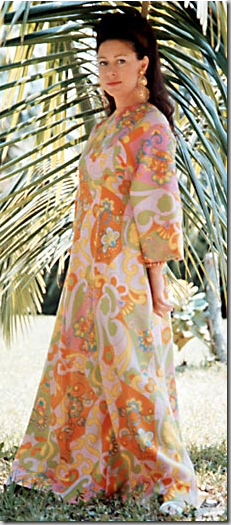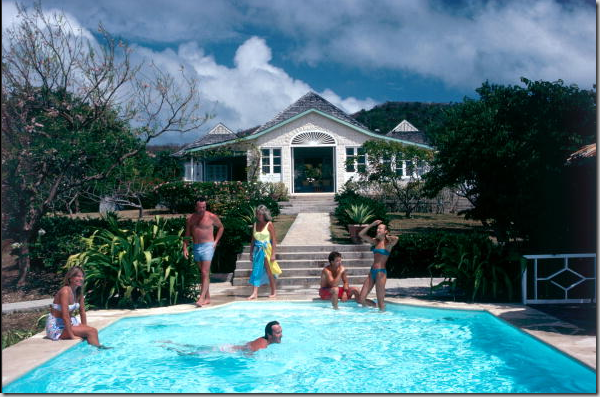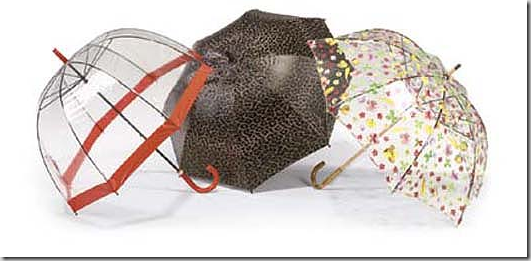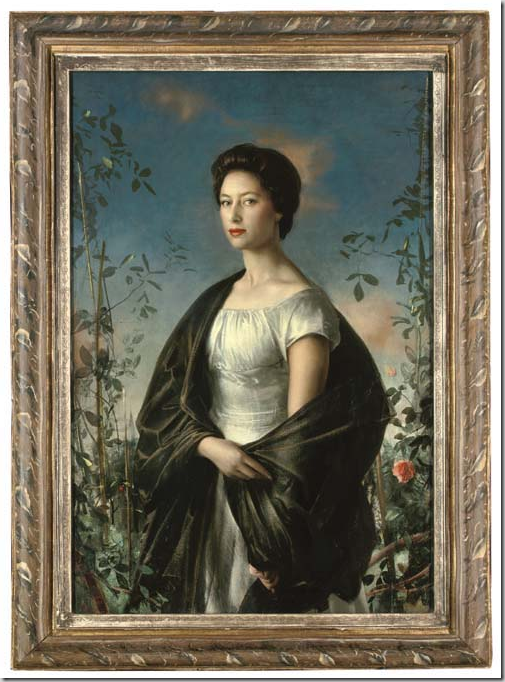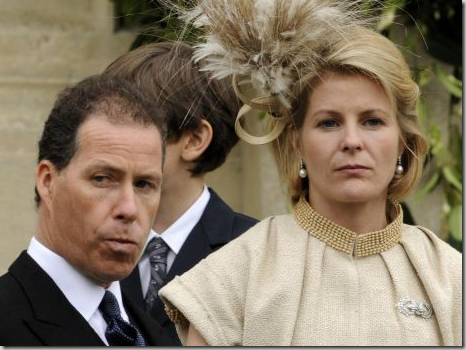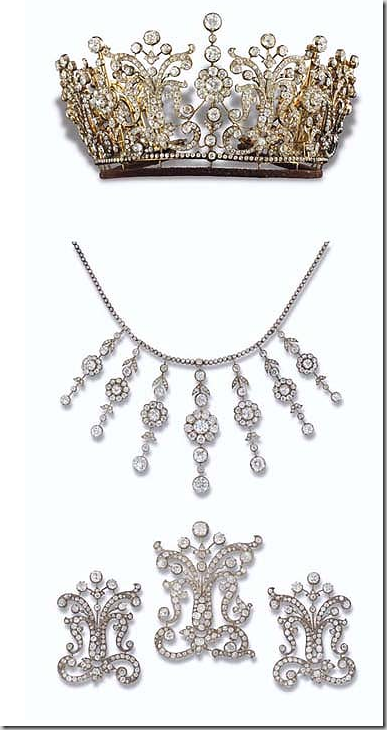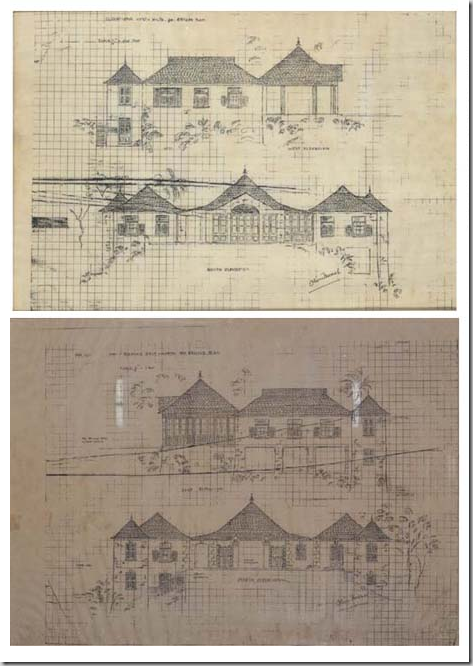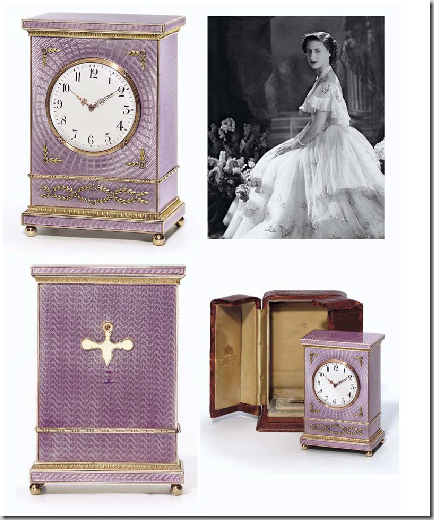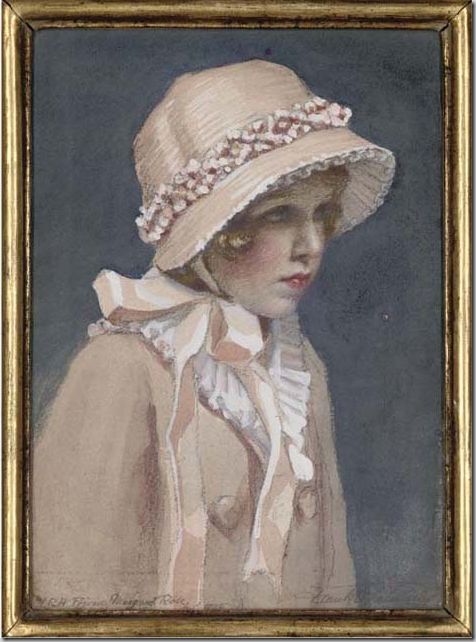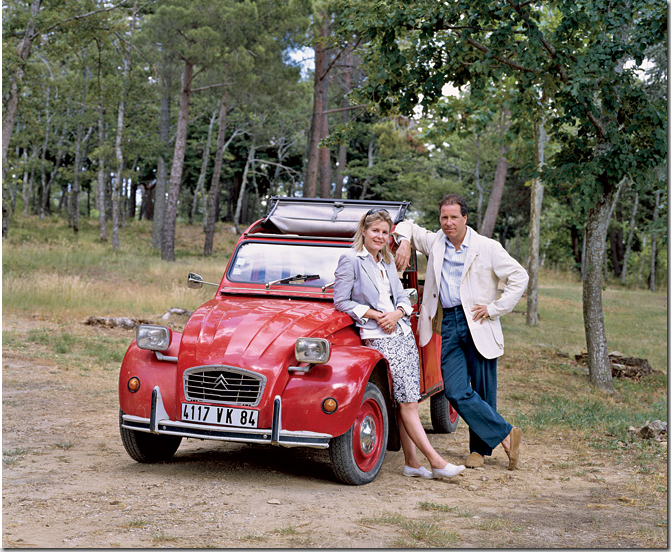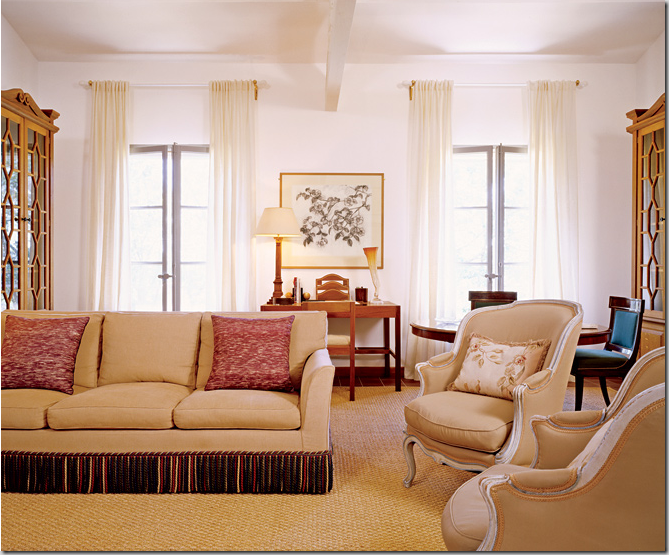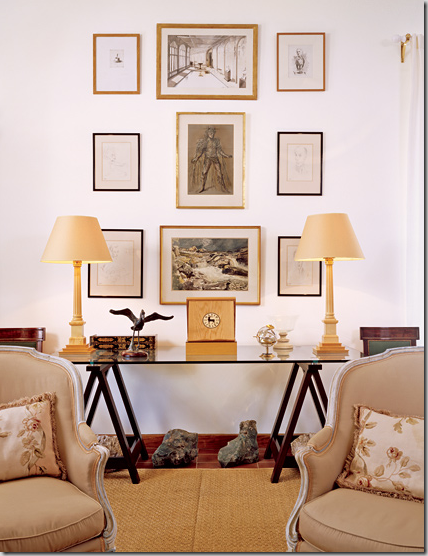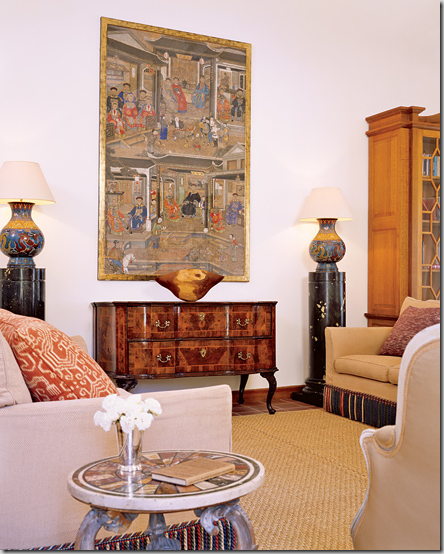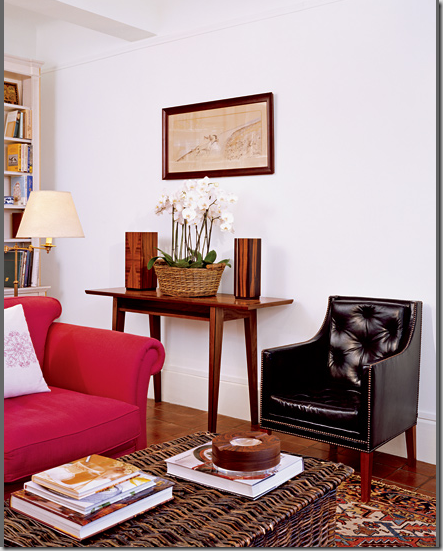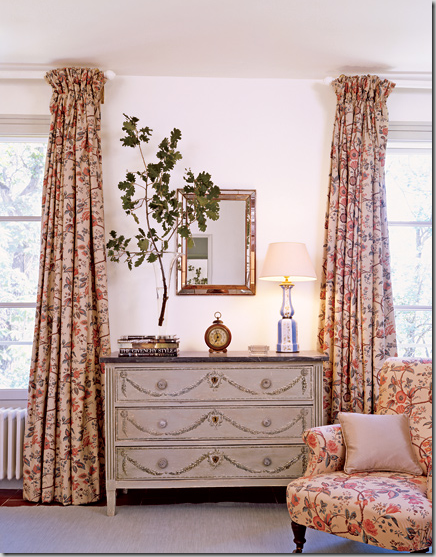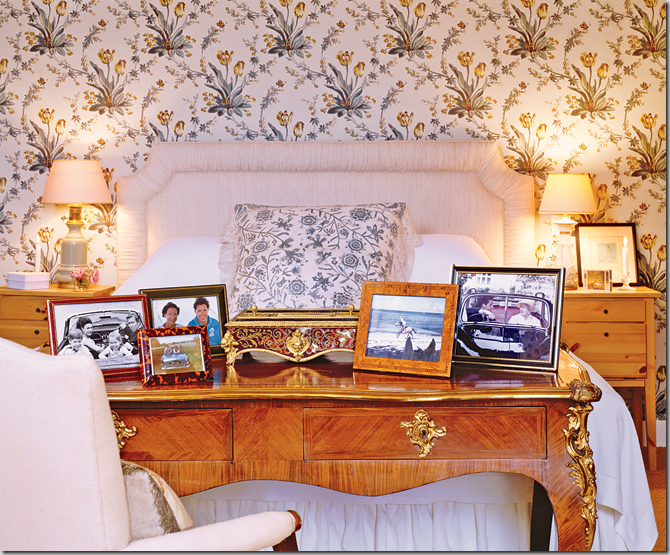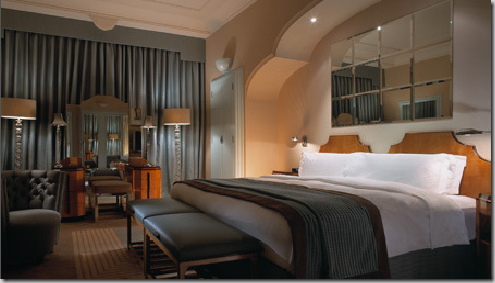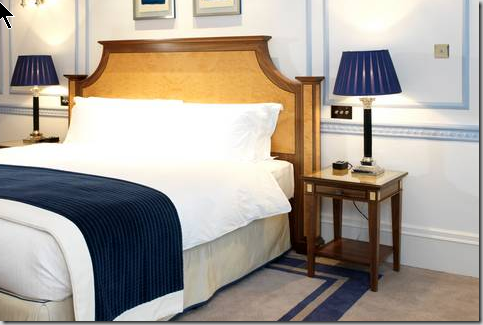When Princess Margaret turned over ownership of her Mustique home, Les Jolies Eaux, to her son David, Viscount Linley, little did she know he would end up selling it and with the profits move his vacation spot to Provence. The Princess was said to be bitterly disappointed when Mustique sold and that sale was the start of a series of events that have thrust Linley into the English tabloid limelight. Linley, who calls himself a “carpenter” is actually quite a gifted furniture designer and heads up the eponymous LINLEY which sells his Bespoke designs and offers interior design services. Twelfth-in Line to the Throne, Linley is married to the fabulously wealthy heiress Serena, with whom he has two children. He is considered one of the hardest working Royals, but, leave it to the English who feel his work ethic is just a tad too common for a member of the Queen’s family. Fleet Street finds Linley an easy target and the carpenter rarely fails to live up to his reputation as being money-hungry. The Mustique house sale proved to be just one event in a long line of grievances the public has against him. He is also criticized for moving too often – at least four times he and Serena have sold their family home and moved on, something that is viewed as an unseemly money-making scheme. (hey - I’m just reporting it as it’s been written!) Everything, it seems, boils down to his unrelenting drive to make money and lots of it, fast. Nothing seems too insignificant to pass up for the mighty dollar - when his father gifted Linley with his favorite Aston-Martin, Snowdon was irate that Linley promptly sold it to make a quick profit. The final straw for the British public came with his mother’s death. Her family was faced with a 3 million pounds death tax bill and apparently, there were no funds with which to pay it, something the English found hard to believe. To raise the tax money, Linley, then on the board of Christie’s, planned a sale of his mother’s personal possessions, similar to the one Jacqueline Onassis’ children had, and even closer to home, similar to the auction of his great-uncle and aunt, the Duke and Duchess of Windsor. Unfortunately, the sale of Princess Margaret’s possessions made David Linley public enemy #1.
Happier times in Mustique. Linley entertains friends at his mother’s house. Photo by Slim Aarons.
Princess Margaret and her son, David Linley vacationing at Mustique.
Once the sale of Princess Margaret’s estate was announced, the public, Linley’s father, and even the Queen of England were reportedly aghast over such personal laundry being aired. The sale, which took place in 2006, lasted two days and netted $25 million, far more than the death tax bill. The profits were divided between Linley and his sister Sarah Chatto, along with a small sum earmarked for charity. Several pieces in the sale caused much concern. One item had to be taken out of the auction altogether, a piece of an iron balustrade from the Princess’ Kensington Palace garden that had originally come from Ascot. The balustrade was deemed to be part of the palace and thus, it was against the law for Linley to dig it up and sell. Additionally, it has been revealed, there was another object that was quietly taken out of the sale, a Lalique Crucifix given to Margaret by her mother, The Queen Mother, who in turn had been given the object by Princess Beatrice, Queen Victoria’s youngest daughter. It is believed that Queen Elizabeth herself requested the crucifix not be sold. Other items, 47 in all, had been given to the Princess on Royal tours - the Queen proclaimed those proceeds must go to a charity, and not to Linley’s or his sister Sarah’s pockets. Most items were personal effects such as endless cigarette cases, pill boxes, and sentimental Christmas gifts from her mother, The Queen Mother and her grannie, Queen Mary. And, there were the numerous pieces of furniture, jewelry, dishes and silver up for auction. The most unglamorous item up for sale has to be the clear plastic umbrella!
Someone actually paid $4,411 for these three plastic umbrellas!!!
It was reported that before the sale, Lord Snowdon contacted Christie’s asking if his son had the right to sell all their wedding presents, since he was still alive and had not authorized it. Christie’s deferred to their new board member and allowed the wedding presents to go on and be sold. But, there remained two items in the catalogue that sparked the most outrage at Linley’s greed. The first was his mother’s wedding tiara that was put on the block, and the second, an important and beloved portrait by Pietro Annigoni, painted of the Princess in 1957. The painting matched one of the Queen’s and its sale caused endless talk of disappointment at Linley’s apparent lack of respect. Before the auction, Linley, perhaps feeling guilty, had three copies of the Annigoni painted – one each for Linley, his sister and the Queen. At the auction, a private buyer purchased the portrait, which later Linley confessed was himself. But, did he really buy the painting back for sentimental reasons or was there another, less honorable reason? When the firm that painted the three copies was restoring the original Annigoni, they discovered the artist had painted on the portrait a tiny, hidden self-portrait, along with a whiskey glass containing a dark heart (perhaps it was, people speculated, Margaret’s breaking heart – over a lost love?) Once these secret details were revealed, the painting was suddenly more historically significant and of course, valuable – something that only Linley knew at the time. Regardless of his motives, the portrait now hangs in his house where Serena likes to show visitors the secret details. This year Linley loaned the Annigoni to the National Portrait Gallery for the public to enjoy.
The Annigoni portrait of Princess Margaret that caused such an uproar when it appeared in Christie’s catalogue. Linley secretly bought the portrait back at auction and recently leant it to the National Portrait Gallery, where it is being shown.
The Annigoni portrait of Queen Elizabeth, painted in 1955, is considered the “sister” to Princess Margaret’s portrait. These two paintings are thought to be the best done of the two Royals - so much so that many years later, the Queen sat for Annigoni again.
Cecil Beaton photographed the Princess in front of the Annigoni portrait in 1958. In this picture, the Princess is wearing the Asprey Art Deco Pearl and Diamond necklace, given to her on her 18th birthday by her Grannie, Queen Mary. The necklace was a personal favorite and she was professionally photographed wearing it many times. At auction, it sold for $509,312.
The Christie’s sale happened two years ago, but the press is still overwhelmingly negative about Linley. At various events, it is reported he appears rude and distracted, and rumors have started about the state of his marriage, once considered one of the strongest Royal unions. At his cousin Peter Phillip’s recent wedding, Linley and Serena both seemed so unhappy, their pictures ran with the headline, “The Glumley’s,” a nickname that has stuck. Apparently, Linley, despite being set for life from the Christie’s sale, has business worries. His company is a labor intensive business and turning a profit is hard fought for. Russia, home to many oil rich billionaires, came to his rescue and one particularly wealthy Russian named Sergei Pugachev infused LINLEY with enough cash to spread his empire throughout Europe and Russia alike. All these business dealings take Linley away from home more than usual, and Serena, who is said to love being a stay-at-home mom, sorely misses her overworked husband. Hopefully, things will get better this summer, in Provence, where they are able to spend time together at their country hideaway.
“The Glumely’s” – David and Serena at his cousin’s wedding. Their sour expression in the photos fueled speculation about the state of their marriage.
Princess Margaret’s wedding tiara. The crown breaks down into a necklace and several pins. England was in an uproar over this item being sold.
This photo of Princess Margaret, taken by her husband of two years, was first seen in 2006 at a showing of Lord Snowdon’s work. He said his wife’s hair was set for a ‘posh dinner” and when she took her bath – he snapped her. Defending the shot, he said “she was so beautiful, so beautiful and great, great fun,” he couldn’t resist finally showing the world his photograph. Who can blame him? With a quote like that, one wonders why they ever divorced. The tiara she is wearing is her wedding tiara, the great Poltimore tiara which she purchased a year before her wedding for 5 thousands pounds. The tiara was made by Garrard in the 1870s for Florence, Lady Poltimore, the wife of the second Baron Poltimore. At the Christie’s auction, an anonymous woman from the far east paid $1,704,576 for the pleasure of wearing it. Where? One can only imagine.
Two interesting items sold at Christie’s auction were the original drawings Oliver Messel did for Princess Margaret’s Mustique home. I would LOVE to own these!!! But at $13,240.00 – they are just a little out of my price range.
One of the items that made the most money for Linley was this original Faberge clock. It was given to Margaret by her “Grannie” Queen Mary. The final price paid? $2,281,600!!!! This was not the only Faberge item in the sale, there were several, but the clock was the most prized piece in the collection.
This piece, the Cartier “Rose” pin was a sentimental favorite as Margaret’s middle name was Rose. The pin was created in 1938 and had a final sale price of $282,624.
Here is Princess Margaret wearing her Cartier Rose pin. Oh, no – wait – that’s MOI! hehe – and no, it’s not real!!! When I bought the pin, I was told it was a copy of the famous Cartier Rose pin.
One of my favorite pieces sold is this watercolor, with inscription, “H.R.H. Margaret Rose, 1935,” by artist Frank Owen Salisbury. The final price at gavel was $15,439. If you are interested, Christie’s still has the entire catalogue of the Princess Margaret Sale with all the final prices up on their web site here. It’s a fascinating peek into the life of the English Royals with direct ties back to Queen Mary. Be sure to take a look!
So, what DID the Linley buy with the money he made from selling his mother’s Mustique house? In 2005, Architectural Digest paid the Linley’s a visit at their country house in the south of France. Enjoy!
The Linley’s at the former hunting lodge Chateau d'Autetin in the Luberon region of Provence. Their car is too adorable.
The summer house consists of three buildings that are in different states of repair. Here, the main house is at front, the guest house behind. The property is over 650 acres.
This view on the dining terrace is fabulous, but the view east is covered by a forest of trees – putting the property into the deep shade, robbing the Linley’s a gorgeous sunset view, Linley reports.
The guest house living area is simply but elegantly furnished with seagrass and antique French bergeres. The tall cabinets are by LINLEY, as is the desk. which he built when he was just 13.
In the guest house: Linley designed the console table and the sycamore clock and lamps. The six drawings by Cecil Beaton flank a Carl Toms in the middle and a Matthew Rice in the top middle.
Another close up of the guest house living area. The large painting was bought by Serena for David in China. The 19th century Italian commode and the side table were both inherited from his great uncle, Oliver Messel.
The mud room in the main house has a collection of hats and a stick with a basket for collecting truffles.
In the main house is a copy of Horatio Nelson’s chair made by LINLEY. The console and vases are also his.
In the dining room hangs a drawing by Messel over a chest of drawers, also from Messel. The fruit urn is from LINLEY.
In the guesthouse bedroom is a mirror and chest of drawer’s from Messel’s house in Barbados. This room looks utterly charming!
Family portraits of David with his Royal Family are displayed on the desk in the master bedroom.
In the master bedroom is a model of Villa Cornara by Palladio. The model is actual a jewelry box by LINLEY.
The pool with its stunningly beautiful views of the hillside of Luberon. This property is wonderful – and decorated very nicely. The houses are available for rent – but, I could not find the realtor with the listing, tried though I did. The interior design was a surprise and much more to my taste than the design work LINLEY does for clients. Here are just a few pictures off his web site, advertising their interior design services – so you can see the difference between LINLEY’s professional work and his personal work:
At London’s Claridge’s hotel, LINLEY designed the rooms and the suites, pictured above. Besides residential work, the firm designs hotels, and specializes in private airplanes and yachts.
A room at Claridge’s – designed by LINLEY. All rooms are filled with furniture designed and produced by LINLEY.
A development on Singer Island in Miami.
The Retreats in Kenmare, Ireland. As is evident, his professional interior design work is very different from his country house in Provence! The design is very masculine, with a heavy use of woods and paneling. There is an art deco, contemporary feel to his designs, though much of his furniture is based on classical lines.
And finally, for more information about LINLEY and to order his products online, go here.
